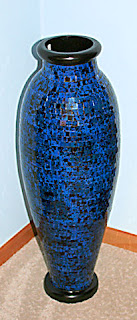As a mature reader, I
want a minimum of description so that I can imagine the characters and settings
for myself. But when I was younger, I enjoyed the extensive descriptions in
classic literature, and my middle grade beta readers have told me that they
want something in between.
Finding the right balance
can be hard, especially since it must be the point-of-view character’s natural
thoughts. Unless we are vain or dressing for a special event, most of us don’t
think about how we look. Yes, we check to make sure our hair is brushed and our
makeup is on correctly, but we don’t specifically think about our brown hair
and green eyes and nondescript face. So when describing the two protagonists
from my current work in progress, I struggled to make the description natural.
This means that, first, I had to give my POV character a plausible reason to
think about it, and, second, I had to put the description in her own words.
My two protagonists are
twelve-year-old cousins who alternate point-of-view chapters. Julia has a rich
imagination, and Fannie has none. I want to describe them in enough detail to
make my readers happy, but the only feature truly important to the story is
that Julia is slightly overweight and Fannie is not.
The physical description
of the two characters seems to fit most easily in the second Julia chapter,
where I can use the fathers’ similarity as a lead-in. However, Julia wouldn’t
necessarily think of herself as overweight, so how do I get that across? Julia
would probably make the comparison using metaphors or similes, but she is
unlikely to think of her body shape in a negative way. To complicate matters
further, the comparison I use must be to objects that were present in 1872 but
can also be understood by today’s preteens.
Here are some of the
comparisons I considered:
Fannie Julia
lamp post pillow (soft and
comfortable)
clarinet violin
cattail (or
lily) lilac bush
green bean cucumber
Gripping her hatbox, Julia followed her
father and stepmother off the train. Then she spotted her Uncle Albert in the
crowd. He was younger than her father, but anyone who looked at them could tell
they were brothers.
Maybe that was why strangers who saw
Julia and Fannie together thought they were sisters, although Julia couldn’t
see the resemblance. Both had green eyes and chestnut brown hair, but Julia’s
hair was straight while Fannie’s curled naturally, making it appear thicker and
puffier. And they were both average height, but Fannie was as lean as a lamp
post while Julia was shaped more like a Chinese vase.
I’m still not happy with
it, so if you have any better ideas, I’d love to hear them.










No comments:
Post a Comment